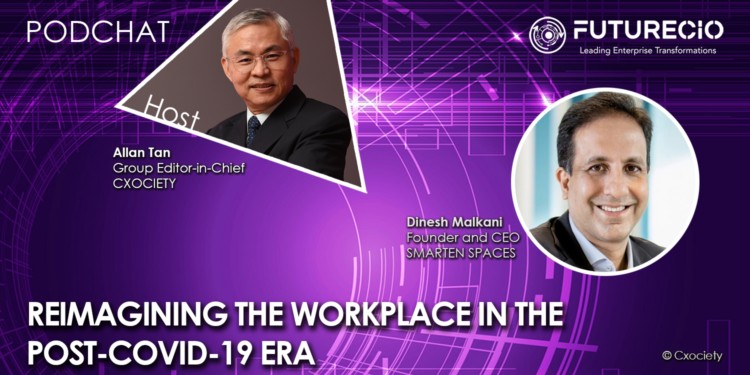One of the characteristics of the workplace of 2020 has been the lack of people in the office. COVID-19 saw a significant proportion of businesses adopt remote work in support of efforts to contain the pandemic.
Is there a better way, a smart way for businesses to organise their workforce so that they can optimise fixed assets like facilities?
Jones Lang LaSalle (JLL) forecasts that “upwards of 40% of today’s office assets need some form of enhancement to stay relevant.” The JLL report, Home and away: the new workplace hybrid?, suggests that during the COVID-19 period, 68% of employees were working from home.
FutureCIO spoke to Dinesh Malkani, founder and CEO of Smarten Spaces, how COVID-19 is forcing organisations to reimagine the workplace.
Smarten Spaces has built technology and platform to make smarter and better use of workspaces. Malkani acknowledged that technology penetration in space management remains low although the pandemic may be changing that.
“Every office is being re-done as people are moving towards the hybrid workplace. We happen to be a startup that has the entire technology solution ready to bring companies to hybrid working in the hybrid workplace."
Dinesh Malkani
Sundar Nagarajan, head of Consulting at JLL, noted that the pace of digitization and adoption of automation in 2020 has accelerated businesses to 2023-2024 levels right away, adjusting decision-making and way of working – all in the name of revenue.
Malkani noted that the shift to a hybrid model of work is not entirely driven by COVID-19. Organisations have been studying this opportunity even before that. He did acknowledge that many such discussions floated around experimentations. He credits the pandemic as proving that it is possible to sanction work from anywhere without sacrificing productivity or risking security.
“Companies have been moving in the direction of being able to work from anywhere – in the office, co-working space, or home, in what we now classify as hybrid work strategies,” he concluded.
Challenges for leadership
According to Malkani, the challenge for CHROs is to ensure that they're able to offer the notion of flexibility to all of the workforce. “They will then need to consider the policies and rules around such arrangements. HR teams today are grappling with the fact that we can now hire anyone from anywhere in the world, as we work remotely,” he added.
For CFOs and CEOs, the discussion will become mainly about cost considerations and the optimum use of whatever approach is taken by the company. The CIO’s task will be around the use of technology to facilitate hybrid work strategies.
Technology-led adoption
“To create a frictionless environment where workforce productivity is at its peak, a lot of data needs to be relooked at. The CIO will need to ensure that the environment and network are secure and that regulations are complied with,” he added.
According to Malkani, the pandemic has influenced what and how technology is being used in the workplace. Employee safety and the ability to find available space have become important considerations in the adoption.
“Incorporating technology is key in making it easy and essential for the user to address their concerns, and that's when the adoption rate becomes high. Technology is no longer a nice to have. Beyond providing data, AI-incorporated technology that provides recommendations to business owners has a huge role to play in driving adoption rates,” he added.
He saw the shift to AI within the realm of workspaces as an essential ingredient to achieving a successful hybrid workplace that is very productive and cost-effective.
Click on the podchat player above to listen to Malkani share his opinion and recommendations on the better use of workspaces using technology.
- How do you see space-as-a-service and office decentralization changing the workplace of the future?
- But how do you see space-as-a-service and office decentralisation changing the workplace of the future?
- Analysts suggest that the post-COVID workplace normalisation will combine remote work together with the traditional office environment. How will this shift impact the way CIOs, CEOs, CHROs and CFOs these executives do their job?
- How does the CIO ensure that they are able to connect or to manage the workforce and the facilities that they use including network infrastructure, the applications, even when those persons are not in the actual enterprise facility, the operations itself?
- How do technologies like those of Smarten Spaces protect data privacy?
- What is the Smarten Space value proposition for mall operators?
- What will further drive the adoption of technologies, similar to what Smarten Spaces offers today?
- When you pitch a Smarten Spaces solution to prospective clients, what's the typical objection that they would present to you?
- What do you see in terms of emerging technologies that will further influence the proptech market that you are in?





